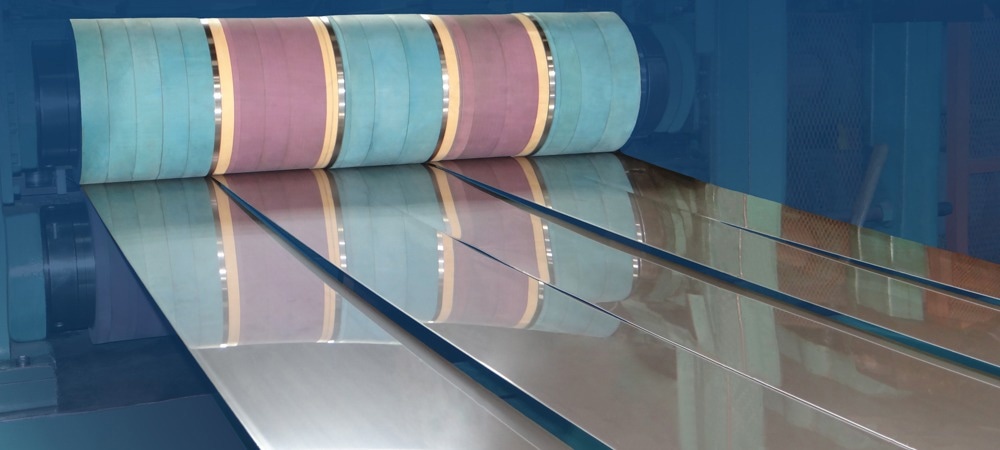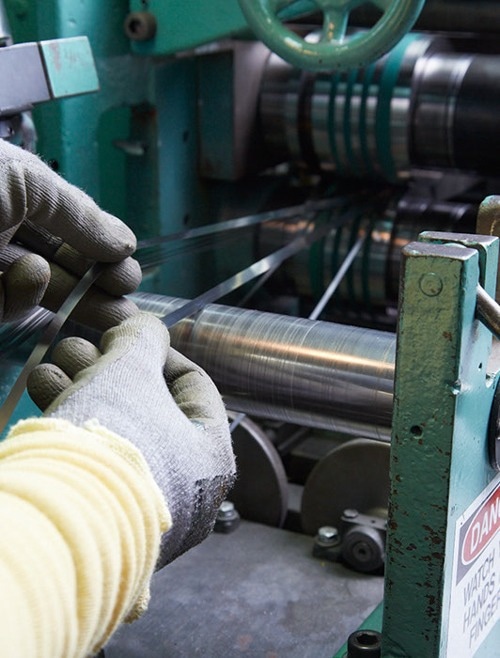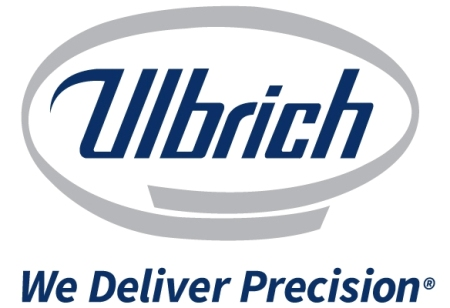As industries progress, the need for slit coil to adhere to stringent and precise requirements also increases. Steel coils must enhance efficiency and productivity while surpassing rigorous industry standards. One way to achieve this is through slitting and edge conditioning.
Slitting and edge conditioning (also known as skiving) are key parts of steel processing that enhance the safety and quality of the final product. While there are applications that do not require extensive or precise slitting and edging, the majority of industries profit from the practical benefits only provided by slit and conditioned metal.
How the Slitting and Edge Conditioning Process Works for Stainless Steel Slit Coil
Steel slitting cuts a wide master metal coil into slimmer strands with more coherent measurements. Manufacturers easily pass the large stainless steel through a slitter machine, then recoil the resulting strands into a finished coil. However, during cleaving, a burr forms on the slit edge due to the machine’s knives.
A slitting burr can benefit welding applications, but in several cases, sharp edges are more of an inconvenience. That’s where edging, technically known as edge conditioning, comes in handy. The edging process helps smooth or round the sharp edges of slit metal to eliminate the burr and make it safer and easier to handle and for use in exposed applications. Conditioned edges come in a wide range of shapes: beveled, deburred, round, rolled, square, and even custom edges.
Types of Steel Used in Slitting and Edging
All types of steel can be subjected to slitting and edging, but not all metals are compatible with each edging type. Choices may be limited when it comes to edging by steel grade, size, and width tolerance.
For example, some edges function better on harder grades of stainless steel, but the same process could compromise or shred softer steel. Specific edge shapes also have width and material thickness limitations. Even if the edge of preference is not viable for a given application, there is no need to worry about quality. Any type of edging enhances the quality of strips and eliminates rough edges.
The cutting machine makes a difference to the material used. The majority of cutting machines function similarly, but the final product is influenced by parameters such as the cutting tool, the rake angle, and how the metal is coiled.
With decades of slitting and edging expertise, precision re-roll mills and service centers such as Ulbrich’s can advise on the appropriate skived edge for metal and application needs.

Image Credit: Ulbrich Stainless Steels & Special Metals, Inc.
Benefits of Slitting and Edge Conditioning
Appropriate slitting and edge conditioning is crucial for three main reasons: functionality, safety, and aesthetic.
Functionality
The functional benefits of a slit coil include:
- Coil customizability: slit coils are rerolled to inner diameter and coil size specifications
- Enhanced efficiency: slit and edged metal is easier and faster to feed through machinery
- Higher-quality products: edging results in a more uniform metal
- Extended life expectancy: conditioning avoids edge cracking and improves formability
Stainless steel objects such as food trays or soup ladles would not be functional without appropriate edge conditioning. Conditioning is more than simply removing a slitting burr; it is a necessary processing step for final product functionality.
Safety
Raw or rough metal edges present serious safety hazards. A slitting burr puts workers and consumers at risk of cuts and scrapes. However, an edge-conditioned metal will not snag on skin or clothing as it is is smooth on all sides, securing safer handling practices without hazardous burrs. This limits injuries, reduces liability, and enhances employee safety.
No matter the edge condition, gloves and arm guards should always be used when handling slit coil. Sharp edges on strip coil may damage processing machines, and they can even cut wires and other fragile objects they come into contact with throughout the processing and assembly phases. Appropriate edge conditioning will help protect and extend the life of all machinery and tools.

Image Credit: Ulbrich Stainless Steels & Special Metals, Inc.
Aesthetic
Smooth edges are more aesthetically pleasing. Rough edges are not acceptable for consumer stainless steel products. A stainless steel refrigerator without perfectly rounded edges would look cheap and unsightly.
Slitting and edging helps remove imperfections from the metal’s surface and improves the finished product.
Practical Applications for Slitting and Edging Stainless Steel Strip
A slit coil has numerous practical applications. Firstly, when purchasing metal that has undergone slitting, it will be closer to the finished size of the final product. This helps reduce waste and saves processing time. As slitting and edging generate more consistent and better-quality metal products, the conditioned steel is useful for application in markets and applications that require precision and tight tolerances, such as:
- Aerospace
- Automotive
- Electronics
- Environmental
- Food service
- Medical
- Residential
- Telecommunications

Image Credit: Ulbrich Stainless Steels & Special Metals, Inc.
Conditioned stainless steel is commonly used for surgical instruments, flexible metal hose, hypodermic needles, and superconductors. Rounded and polished coils can also serve aesthetic purposes, and they typically feature as design elements in the automotive industries.
Stainless steel slit coil benefits a number of industries as it is easy to sterilize, versatile and not vulnerable to corrosion or rusting. With the addition of processing such as slitting and edging, it becomes an increasingly practical and efficient choice for a number of precision products. Precision cutting methods can produce the optimal characteristics for numerous critical applications.
Learn More About Slitting and Edging
For the most efficient and safest processing methods, your slit coil must be second to none. Slitting and edging stainless steel strips in the appropriate manner ensures the best-quality final product and an enhanced handling experience. Slitting and edging are key requirements for clean and safe metal edges across all industries and applications.
Contact Ulbrich today for additional information about the slitting and edge conditioning services available. A specialist will be on hand to answer questions about your specific needs, or you can simply request a quote right away.

This information has been sourced, reviewed and adapted from materials provided by Ulbrich Stainless Steels & Special Metals, Inc.
For more information on this source, please visit Ulbrich Stainless Steels & Special Metals, Inc.